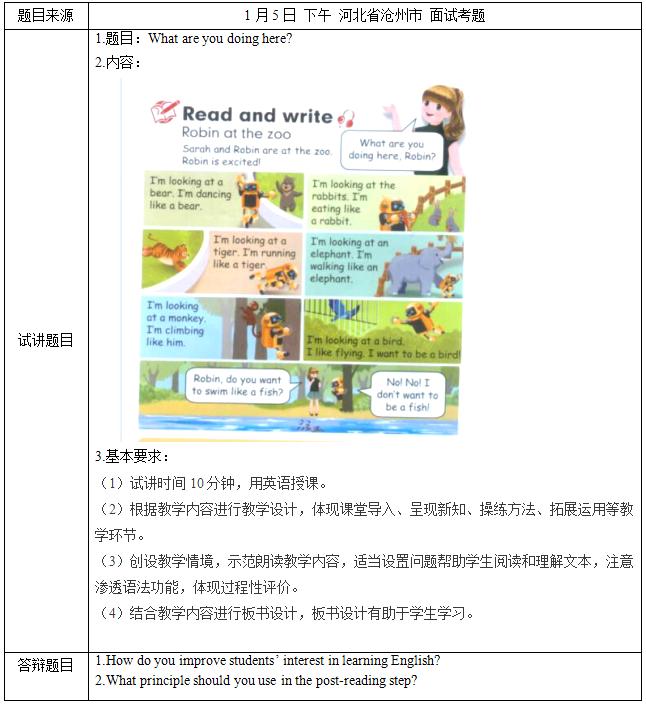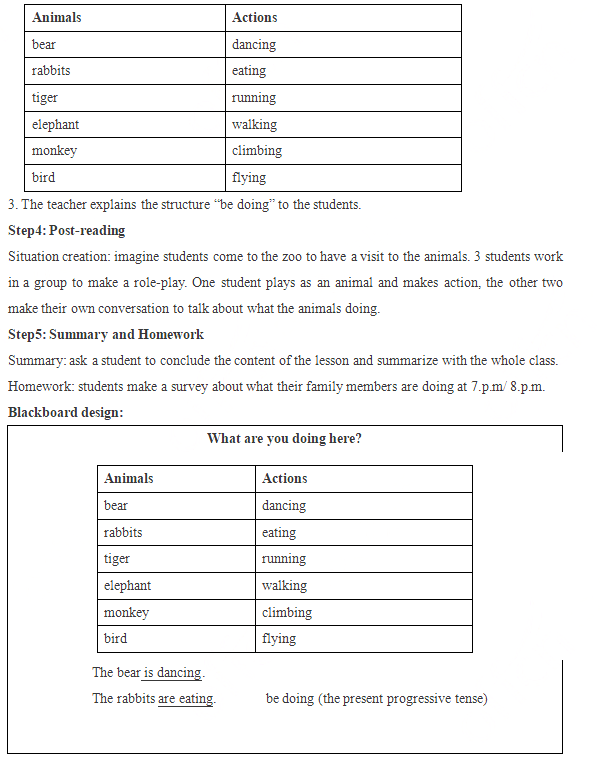高中英语?阅读
一、考题回顾

二、考题解析
【教案】
Teaching aims:
Knowledge aim:
Students can know the basic meaning of passage and are able to master the different greeting for the strangers.
Ability aims:
Students can practice guessing content of next paragraph according to the clues which is given in the passage.
Emotional aim:
Students are able to love learning English and like to read different English passage after this lesson.
Key and difficult point:
Key Point: guess the content of next paragraph according to the clues and know the “learned” body language, especially different greetings
Difficult Point: improve students’ reading interest.
Teaching procedures:
Step 1: Warming-up
1. Greetings.
2. Play a video about Chaplin’s mime and ask students several questions:
What kind of body language can you see from this video?
Do you know the meaning of these body language?
Step 2: Pre-reading
Present the passage on the screen and read it for all the students. Before reading, ask students one question: What’s the main ideas of these two paragraphs? And guess the main to topic of this lesson?
Then invite several students to share their ideas.
Step 3: While-reading
1.Lead the students to think one question: Is this a whole passage? And ask students to scan the whole passage and give the teacher answer.
2.Ask students to discuss in group and after 10 minutes to invite several students to share their ideas with all the students.
3.And different students may be just guess the content of several paragraphs. So give students a chart, ask them to finish discussing in 5 minutes. Then invite two representatives to state the whole passage.

Step4: Post-reading
Guessing game: Present another passage on the screen. And give students 10 minutes to read and discuss.Then make a chart and tell your own stories according to chart in your own group .Then invite the representatives to make a report for the whole class.
Step5: Summary and Homework
Summary: ask a student to conclude the content of the lesson and summarize with the whole class.
Homework: Present a passage and ask students to read and write a short passsage,which will be put behind of last paragraph.
Blackboard design:

1.Do you have the experience in teaching?
2. What will you do if you pass this exam?




